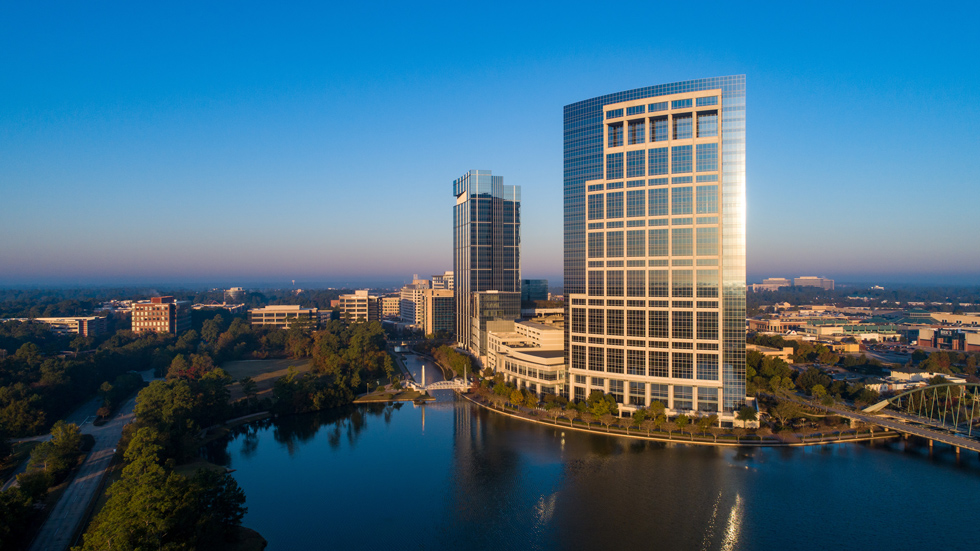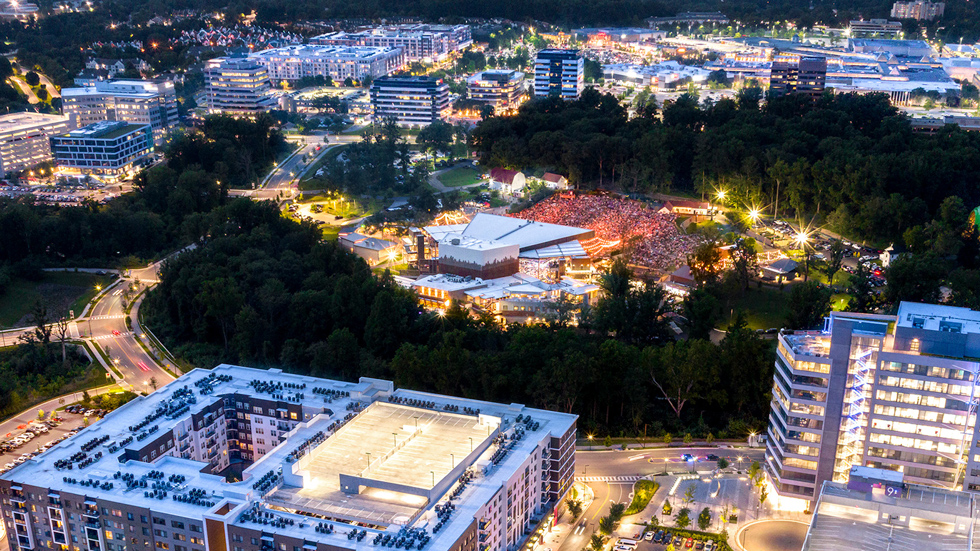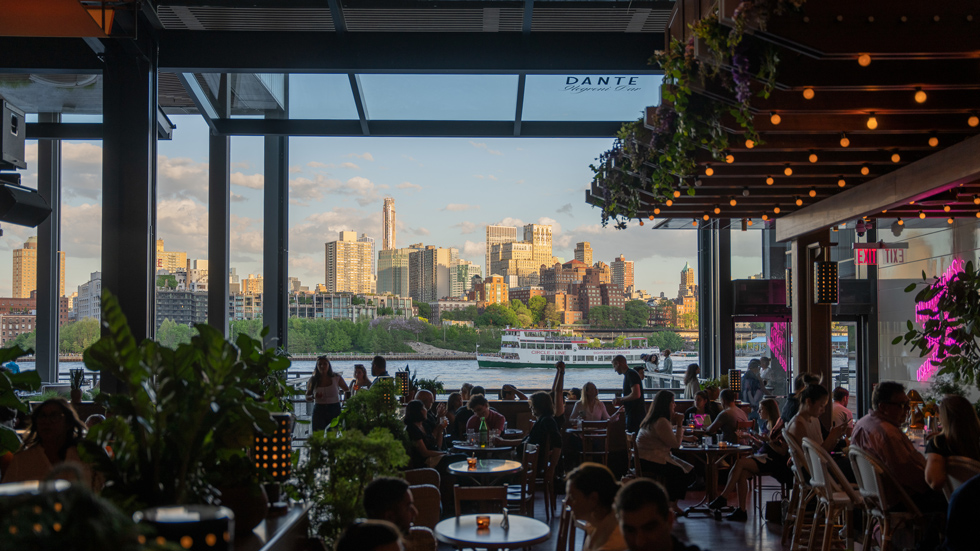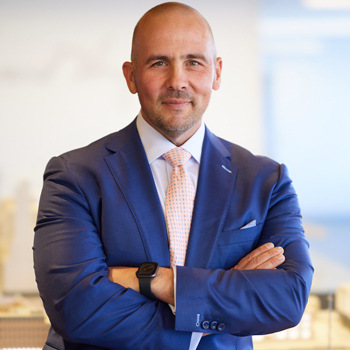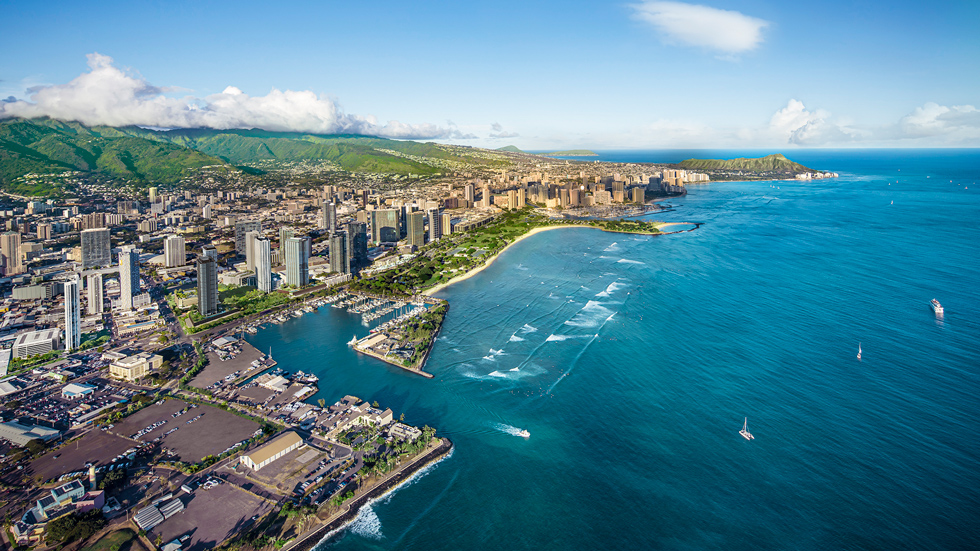With a portfolio that spans from Wall Street to Waikiki, The Howard Hughes Corporation (NYSE: HHC) has found that collaborating with all its regional stakeholders and becoming an integral part of a community’s social fabric is essential to ensuring the success of its many long-term residential, office, and retail projects.
Howard Hughes owns, manages, and develops commercial, residential, and mixed-use real estate throughout the United States, including a portfolio of master planned communities (MPCs) as well as the Seaport neighborhood in Lower Manhattan. Each of the six regions where it operates—Arizona, Hawaii, Maryland, New York, Nevada, and Texas—are led by regional presidents.
David O’Reilly, CEO of Howard Hughes, says the company’s growth has also been driven by its ability to create communities and working environments that respond to market demand and are underpinned by a decades-long commitment to self-sustaining ecosystems that provide inclusion, conservation, and innovation.
O’Reilly has been CEO since December 2020, having served as interim CEO and CFO since joining the company in 2016. The company originated in 2010 when it was spun off from GGP—now Brookfield Properties Retail Group (NYSE: BPR)—and became an independent, publicly traded real estate company.
Livable Cities
Howard Hughes is headquartered in The Woodlands, one of the company’s three master planned communities in the greater Houston area. Founded in 1974, The Woodlands, which has earned LEED precertification by the U.S. Green Building Council, encompasses 28,000 acres and is three times the size of the island of Manhattan.
With approximately 120,000 residents, the community has maintained positive population growth every year since its founding. Around 68,000 jobs are located within its borders, making it a thriving, self-contained neighborhood, rather than a Houston bedroom community, O’Reilly says.
“Return to office is a challenge for all of us, but to the extent that we're able to help deliver great office buildings in these unique communities with very short commutes, we're helping employers incentivize their employees to get back to the office and drive productivity,” O’Reilly says.
While each of Howard Hughes’ communities has an individual, authentic sense of place, O’Reilly says they all reflect the company's values and share a commitment to a high-quality lifestyle. “We try to create those trails, houses of worship, excellent schools, great restaurants, theaters, and arts and entertainment amenities that our residents are yearning for within their community.”
At Ward Village, for instance, a 60-acre coastal MPC located between downtown Honolulu and Waikīkī, Howard Hughes has created a walkable neighborhood with retail offerings and restaurants that connect to expansive parks and open spaces, O’Reilly says. At the same time, Ward Village continues to embrace the history and culture of the island and the locals that have been living there their whole life, he adds.
O’Reilly describes the company’s communities as among the most livable cities in the nation, situated in business-friendly states that allow both people and companies to grow and thrive. “We integrate urban walkable centers into expansive, open green space, providing short commutes and an active lifestyle,” he says.
Taking the Long View and Staying Nimble
O’Reilly emphasizes that every project that Howard Hughes embarks upon is viewed for the long-term; “We think in decades,” he says.
“Expert master planning demands that we take that long-term view, and that we remain responsible stewards of the communities that we build and collaborate with all key stakeholders, elected officials, residents, and tenants, to make sure we meet the needs of those folks that live there, including our employees and their families,” O’Reilly says.
With such protracted time horizons, remaining nimble is key. The master plan that was laid out 10 years ago, five years ago, or even last year, may not be appropriate given the changing market environment, O’Reilly says. “Every six months we have to break out the plans and take a hard view at what we have been thinking we should build versus what our residents and consumers are now needing—and look to need in the future,” he says. “That can mean making some pretty meaningful changes.”
A case in point is Howard Hughes’ Columbia, Maryland development, one of the first MPCs in the country that was founded by developer James Rouse in 1966. In December 2022, Howard Hughes broke ground on an approximately $46 million medical office building in Columbia’s Lakefront District, “an area that I don't think two or three years ago, or certainly not before the pandemic, would've seen such demand for medical office.”
Now that demand is clearly there. The building is meaningfully pre-leased, according to O’Reilly, with several tenants interested in taking the remaining vacancy. “Residents are looking for that convenient, brand new medical office building to get their services. And that's a great example of how we're pivoting.”
Seaport Recovery
In the current environment of economic uncertainty, O’Reilly acknowledges that there isn’t a market without challenges, including New York City, home of Howard Hughes’ Seaport district, with its various entertainment, community, dining, and cultural experiences.
O’Reilly remains positive about the market’s prospects, however. “What we've seen in Lower Manhattan in terms of resiliency of the residents, resiliency of the tenants, their desire for great experiences—and Howard Hughes being in a unique position to fulfill that demand—gives me incredible optimism for what we're doing in the Seaport and Lower Manhattan,” he says.
The restored Tin Building, a 53,000-square-foot marketplace curated by Chef Jean-Georges Vongerichten, has been an “incredible catalyst,” not just for the Seaport, but for all of Lower Manhattan, O’Reilly adds.
Meanwhile, The Rooftop at Pier 17, an outdoor performance venue within the Seaport district, held more than 60 shows in 2022 with over 90% of available tickets sold. That led to it being named the number one top outdoor music venue in New York City by Red Bull and the number three top worldwide club by Pollstar, O’Reilly notes.
Meanwhile, managed restaurants at the Seaport saw increased demand from both locals and tourists, which drove an increased interest in private events, O’Reilly says. At the same time, fashion designer Alexander Wang signed a new, 46,000-square-foot, 15-year lease in the Fulton Market building to bring his global headquarters to the Seaport.
Green Shoots
One of Howard Hughes’ key priorities, whether there is potential economic uncertainty ahead or not, has been to focus on maintaining substantial liquidity, primarily in the form of outsized cash balances, O’Reilly explains. In recent months, the company has closed on $1.03 billion in new financings across the entire portfolio, increasing the company’s overall liquidity to $800 million.
“To get those financings done in a challenging capital market is really a testament to the quality of our assets, the quality of our communities, and our history as a borrower,” O’Reilly says.
In total, Howard Hughes reduced its debt maturities over the next two years to less than $155 million and extended its weighted average debt maturity to about seven-and-a-half years. “We feel like we're really well positioned, not just for today's economic uncertainty, but for whatever could come in the future,” he says.
Alexander Goldfarb, managing director at Piper Sandler & Co., says when you look at the results Howard Hughes has achieved, “it’s been pretty methodical and that’s very impressive for a business that is high risk—because development is high risk.”
At the same time, O’Reilly acknowledges that higher interest rates have impacted new home sales across all its regions. Fourth quarter home sales were down to about 251 homes sold and for 2022, it was just under 1600 homes—about a 43% reduction compared to record sales in 2021.
“In 2023, we're looking at what I hope are the green shoots of a quick recovery,” O’Reilly says, with home sales in both Summerlin, the Nevada MPC, and the three Houston MPCs “rebounding very nicely.” Through the end of February, home sales had already exceeded the total for last year's fourth quarter, he points out.
While there are always cycles in the residential market, O’Reilly says, long term there is always outsized demand for land holdings, “and we're as well positioned as anybody in this country to meet that demand.”
As the master developer in its communities, Howard Hughes owns both the residential and the commercial land across the area. “If we build great assets, they'll not only generate outsized risk adjusted returns in terms of free cash flow from NOI, but they'll also make our communities better places to live, which will in turn attract more residents that want to own homes.”
Goldfarb credits O’Reilly with bringing the company back to the original emphasis on building MPCs and being able to fund projects based on land sales. He also stresses that the focus is on projects that are “reasonable to build and manageable, not outsized mega projects.”
Varied Price Points
One of the major challenges facing the housing market today is the shortage of homes, especially homes at the lower end of the price range. O’Reilly says this is something that Howard Hughes is working to address.
“Our job is to provide housing options at the widest possible price points to welcome in the highest number of new residents and the most diverse number of new residents that we can,” O’Reilly says.
When Howard Hughes sells land to home builders, it is “very prescriptive in terms of the size of the home, the look, the feel, the color, the setbacks, the design, and also the price points,” O’Reilly says. Those price points can range from the low $300,000s to more than $1 million. “Where we can, we're very aggressive in trying to make sure we have the right price points across the community,” O’Reilly says.
At the same time, Howard Hughes has also launched its first single-family for rent community neighborhood, a project of 263 homes called Wingspan at its Bridgeland MPC in Cypress, Texas. Ranging from one to four bedrooms, the homes will have the benefits of a single-family home, including outdoor spaces and garages, along with community amenities, including pools, fitness centers, and meeting areas.
New Horizons
As for new geographic markets in which to introduce the MPC model, O’Reilly points to the company’s recent acquisition of about 37,000 acres west of Phoenix, next to the White Tank Mountains in the Phoenix West Valley.
The site is uninhabited today, but is fully entitled for 100,000 homes, 300,000 residents, and over 55 million square feet of commercial space that at full buildout will be a community roughly the size of St. Louis, O’Reilly explains.
“I would characterize that acquisition as a once-in-a-decade opportunity to be able to find that much contiguous land, fully entitled, directly in the path of growth in a business-friendly state—and immediately adjacent to a large city,” O’Reilly says.
Beyond this latest transaction, “I don't know where that next acquisition will be,” O’Reilly says. What he does know, however, is that it will likely be consistent with all its other communities, which are in warmer, less expensive climates, business-friendly states, with access to major infrastructure and thoroughfares.
Ultimately, Howard Hughes is looking to design a community that can deliver a quality of life that's unmatched in its immediate surroundings, O’Reilly says. The goal he adds, is in line with the vision of James Rouse, who expressed it once as: “In business. what one should really be seeking is that which will better meet the needs and yearnings of people than what is.”
“That’s really what we try to do,” O’Reilly says.
